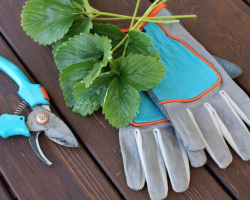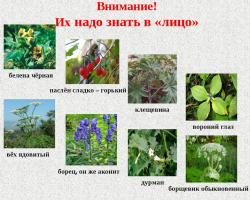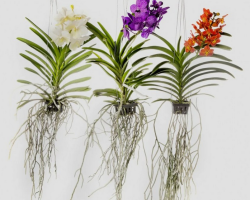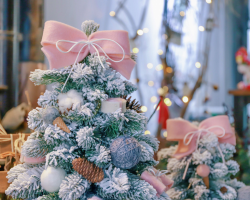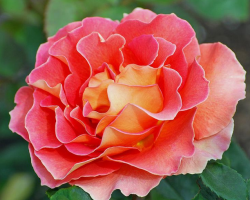We will tell you how to correctly cut fruit trees. Pruning of apple trees, pears and cherries that only benefit them.
Content
- When to conduct spring and autumn pruning?
- Do I need to process slices by garden var?
- The main rule of trimming trees
- We form a crown when cutting a fruit tree - is it necessary for the shape of the bowl?
- How to cut out an apple or pear - the technique of trimming trees
- Video: Pruning of cherries KGB or bowl
- Video: trimming of fruit trees on the example of a young pear
- Autumn pruning of cherries, cherries and other bone
- Video: Berely pruning of high cherries
Pruning of fruit trees - This is a procedure that some owners do not do at all, others simply adore. And which of them is difficult to say. See what arguments are given by those who believe that pruning of an apple tree or cherries is an unnecessary event.
If you correctly trim the tree, then it will have large and beautiful fruits. But there will be fewer of them. If the tree is not cut at all, then there will be many small fruits on it. Probably, they will be more damaged by diseases and pests. For example, a scab that causes a fungus that loves moisture. But if, for example, you need apples only for jam, then it is likely to cut a tree and you do not need to.

If you cut the tree incorrectly, then the risk that you will destroy it is great and it will simply dry out. Particularly sensitive to trim cherries, some varieties of pears and peaches. With apple trees, plums and apricot, everything is much easier. In a word, pruning is more dangerous for delicate trees. If you trim the plum or cherry that has grown in your area at all, then the risks that the tree will dry out is minimal.
When to conduct spring and autumn pruning?
- Autumn trimming of fruit trees In the northern latitudes of Russia It is recommended to be carried out in September or early October.
- In medium and southern latitudes Autumn trimming of trees is carried out later. At the end of October or even in early November.
The general rule is this: to cut branches on the trees, when the leaves began to turn yellow on the tree.
Spring pruning of trees should be carried out when there are no more frosts. But this must be done before sap flow began in the trees, and they actively went in growth. Spring pruning can be difficult to do because spring is swift. Usually a suitable period for her lasts about a week. But it happens that it ends in one or two days, it also happens that the kidneys are already growing on the trees, and severe frosts are beating.

Do I need to process slices by garden var?
Garden Var is very good for spring Cutting. After it, he simply remarkably helps the trees heal the places of sawnuts and protects them from pests.
As for whether it is necessary to process the saws with a garden var in the fall, it is better not to do this. It is necessary to process wood, but it is wiser to do it with oil paint. Garden Var in winter will not be effective and practically useless. He will slide and crack. Therefore, it is better to take paint as a more reliable coating. And it is better to oil paint, because it is intended for wood.
There is one more important rule: you need to treat the saws with paint or garden var in a couple of hours after trimming the tree. Why? Because the wood should dry. Agree, dyeing wet furniture or wet gate is not the best idea.
Sometimes you need to apply a second layer of paint when the first layer is already dry. Especially if you see that the juice has acted at the bottom of the cut.
As for small twigs, To a centimeter in diameter, it is believed that slices after their removal can not be processed at all. More precisely, this can be left at your discretion. If there is excess paint and time, then paint them, and if not, then no.

The main rule of trimming trees
The most important rule is to cut a branch along the growth ring. This is the very place where the branch is just starting to grow, in this zone there is a small thickening.
- If you cut a large skeletal branch too deep and make a hole in the barrel, then in the end you will get the hollow. Moisture will accumulate in this place, the fungus will develop, and nothing good will come of it.
- If you leave the stump, then it will dry out and the bark begins to sprinkle on it. This can become a cozy house for bark beetles, ants and other not quite desirable guests. The fungus also develops perfectly on dry wood.
- The most correct thing is to get a saw in the growth ring. Then this place will begin to actively drag on the bark.

We form a crown when cutting a fruit tree - is it necessary for the shape of the bowl?
Some recommend cutting the trees so that they have the shape of the bowl And grew wide. To do this, they strongly shorten the main stem branch, and the height of the upper shoots is aligned on the side branches so that the top of the tree is almost flat.
Supporters of this method argue that this is how you get a lower tree height and therefore will be more fruits that will be easier to tear.
The tree will eventually turn out about the same as in the next photo.

But we believe that pruning of fruit trees of a bowl is not a very good idea. Why? Because nature will still try to take its own, and if you remove the main branch, then from the side skeletal branches from all sides the branches will reach upward, which will try to take its place. These branches will compete with each other, and the tree will spend strength on the power of vertical branches on which little grows.
It is better if your formative trimming of fruit trees will repeat their natural shape. And only to help this natural form, to be more correct.
Pruning of fruit trees can pursue different goals. This is shown in the following schemes. Often, two types of pruning are done simultaneously, for example, forming pruning and thinning.

- a) shortening the shoots in the first year after the seedling is planted.
- b and c) forming pruning of trees along a given contour.
- d) sanitary pruning (removal of dry and damaged branches).
- e) the thinning of the crown, so that all the remaining branches fall more than air and sun.
- e) rejuvenating pruning of old trees.
How to cut out an apple or pear - the technique of trimming trees
It is better to start pruning of fruit trees from the top, of course, if you can get it to it. The main branch must be shortened, but so that it is 20-30 centimeters longer than the rest of the branches. The kidney to which you cut a branch can be chosen at your discretion. On which side of the branch this kidney will be, in that direction and the cut branch will reach further.
Cut the branch under the kidney you need to try as shown in the following scheme:

- Try to make a slice as little as possible in area.
- Do not leave a large hemp, but do not hurt the kidney.
- Do not make too low and slanting sections.
- Try to choose a saw that makes the most smooth cuts.

Tools for pruning trees
- The secondary engine is another necessary tool for cutting trees.
In addition to ordinary saws and a secateur, fans of their garden can also choose specialized tools for trimming shrubs and trees.
- Procitors with long handles made of light metal.
- Tequicreb on a long telescopic rod. The principle of its work is mechanical, you pull the handle at the bottom of the bar, and the instrument blades are reduced at the top.
- There are saws on long telescopic handles.
- And there are even small batteries with a long handle. An example is this in the next photo.

The formation of the crown
The crown can be formed at several different principles in the fundamentally:
- You can maintain the natural shape of the tree. And only adjust the direction of growth of its branches and a little height.
- There is a system for the formation of KGB trees or Kim Green bushes. The farmer from Australia proposed pruning trees for gardens, in which all the fruits can be reached with hands. It is used mainly for cherries and cherries.
- For cherries and cherries, there is also a system for the formation of the crown of the Spanish bush. In general, it consists in the fact that the branches drop down with cargo, and the top is then cut almost evenly.
First, consider the ordinary trimming of trees.
You may notice that the branches on the tree trunk grow conditional tiers. That is, from about one place to the sides, several branches go away at once. For these tiers, several rules must be followed:
- In one tier there should be no more than 4 branches. If there are 5 or more of them, delete the extra. On the principle of choosing growing too close to others, and the weakest.
- Branches on the lower tiers should not grow above the upper ones. Cut all the vertical shoots that stretch too much so that they do not interfere with the upper tier.
The main stem branch - He is responsible for the growth of wood in height. If you cut it too short, then your tree will be lower. But you will face the fact that it will produce many vertical sprouts that will try to take the place of the main branch. And few fruits will grow on them.
With the classic formation of the crown, the main branch is left above others, it is only slightly shortened.

In addition to the formation of the crown, the traditional trimming of trees also provides for the removal of excess branches. You must remove the branches that:
- Dry or greatly affected by diseases and parasites.
- Those who grow deep into the crown. Such branches can be cut completely, but you can only shorten if there is enough space for them.
- One of the two branches crossing each other is also removed.
- Sometimes the branches are removed. They remove one of the shoots if it grows in the same direction and is very close to another.
Formation of a tree according to the rules of the KGB
Such pruning is used in our country, mainly for cherries. But you need to immediately consider that it is suitable only for trees on a strong shaft.
The stock is a root system to which a seedling of cherries is instilled. The stock is high (ordinary cherries on Dichka), medium and low. The most powerful trees on a low shaft are considered.
Another nuance: these methods of pruning trees from Australia and warm Spain. If you live, for example, under Leningrad, then a huge ball of snow will break your cherries in winter. Cherry is a very weak tree. She has hard, but fragile, as if glass, wood. Therefore, such pruning is suitable only for the southern regions of Russia.
Video: Pruning of cherries KGB or bowl
Video: trimming of fruit trees on the example of a young pear
Autumn pruning of cherries, cherries and other bone
We talked about the autumn pruning of apple trees and pears. For them, pruning is useful, and allows you to get more crop. With trimming cherries and cherries, everything is wrong.
Cut the bone trees with cherries, cherries, plums and apricot without fanaticism. Remove only those branches that grow inside the crown and strongly interfere with another, plus dry branches.
- Bone trees, especially cherries, do not tolerate pruning. If you remove half of the branches on the cherries, then the risk is very great that it will dry out at all.
- In bone trees, there is often gum after pruning.
- Clusing cherries are a particularly risky event. Slices may not have time to live to frost.
For cherries and apricot, it is better to use only forming pruning, when the tree is still small, up to two meters in height. And cut only thin, no more centimeter in the diameter of the twig.
If the tree is larger, lower the branches down. Wrap a lot of layers of fabric or a piece of an old tire on a branch, tie it with a rope or cable and fix it at the bottom with a peg, slag block or brick.
You may be interested in other articles about fruit trees:
- Why whiters trees in spring and autumn?
- The lunar sowing calendar for 2021.
- Beautiful circles for trees in the garden.


